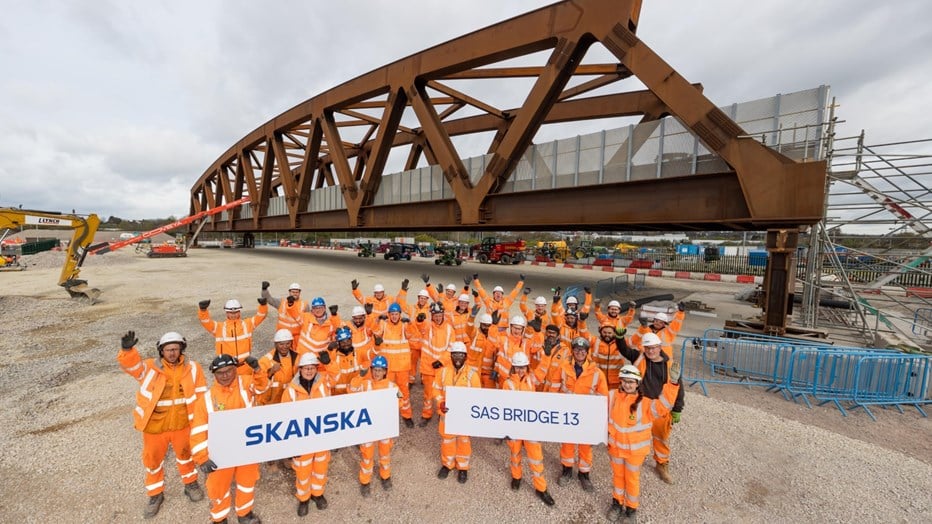The SAS13 bridge replacement project is situated near Birmingham City Centre and acts as an enabler for HS2 on behalf of Network Rail.
The existing bridge, comprising eight masonry arches and a central steelwork span was demolished and replaced with a 92-metre single span steel structure.
The Stechford to Aston (SAS) rail line and Derby to Birmingham (DBP3) rail line, over which the new bridge spans to the east of Birmingham city centre, are key routes for freight and local people.
The works pave the way for the construction of the new HS2 line approach into Birmingham City centre and the planned HS2 Midlands Maintenance Depot.
The contract was agreed as part of Skanska’s work under the Network Rail North West and Central Framework.
The challenge
This was a complex project from a design and engineering perspective which involved the installation of a rail-over-rail bridge on two busy rail routes.
The team pre-assembled the new bridge in a compound adjacent to the existing railway and had to work alongside the live railway lines to ensure the preparation and foundations for the new structure were in place.
Demolishing the old bridge and replacing it with the new structure had to happen during a Blockade, which is a time-period when the railway line is closed to allow for works to be completed.
During May 2022, the old railway viaduct on the Stechford to Aston freight line above was demolished ready for the new structure to be driven into place on 7-8 May 2022.
The solution
Building and installing the bridge, involved precision planning and engineering and the use of some heavy-duty equipment.
The new bridge structure was constructed in a secure compound adjacent to the railway lines. Each section of steel was delivered to site and sat 1.8-metres off the ground. The team constructed the steel work and placed the reinforcement for the deck before lifting the bridge 3-metres above ground to cast the deck and apply the waterproofing and other finishes in readiness for the blockade in May 2022 when it was moved into position.
A 1,200 tonne crane was used to dismantle parts of the old bridge and to help lift the new structure into position.
18 Self Propelled Modular Transporters (SPMTs) were used to move the structure into place. Each SPMT had 12 axles, which meant 216 axles and 432 wheels were used to move the bridge from its fabrication compound to its final position.
The outcomes
Thanks to the collaborative approach, involving Network Rail, HS2, our supply chain and local community, we achieved this successful outcome.
The demolition of the old railway viaduct and installation of the new bridge took place during a 23-day Blockade.
The bridge was pre-assembled in a compound adjacent to the existing railway lines before 18 Self Propelled Modular Transporters (SPMTs) moved the structure into place. The installation period took just under three hours to complete.
On 23 May 2022 the first train passed over the new structure, reopening the important rail freight route and marking a huge milestone.
At 92-metres long, the steel and concrete structure became the longest single span railway bridge in the Midlands.



